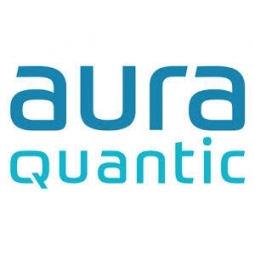Technology Category
- Infrastructure as a Service (IaaS) - Public Cloud
- Networks & Connectivity - 5G
Applicable Industries
- Cities & Municipalities
- Telecommunications
About The Customer
ATIS Ketchum is a strategic communications and public relations agency based in Quito, Ecuador. With 18 years of experience in the Public Relations sector in Ecuador, they work with a portfolio of multinational and Ecuadorian companies. They offer comprehensive communication services, based on credibility, specialized practices, and teamwork. The company has the endorsement and support of Ketchum, the third leading International Communication and Public Relations agency. ATIS Ketchum has over 800 employees and collaborates with offices in over 40 countries through alliances with Ketchum Public Relations.
The Challenge
ATIS Ketchum, a strategic communications and public relations agency, faced a significant challenge when the COVID-19 pandemic hit. The company needed to transition its workforce of over 800 employees to remote work as quickly as possible to ensure the safety of its employees and maintain business continuity. The challenge was to implement a remote work solution that was not only powerful, simple, and safe, but also profitable. The solution needed to enable the employees to collaborate and communicate online between different teams. The urgency of the situation was heightened by the fact that the company decided to implement remote work even before the Ecuadorian authorities put measures in place to contain the virus and before the city of Quito reached a high-level of alert.
The Solution
ATIS Ketchum was able to quickly transition to remote work thanks to the AuraQuantic Low-code Application Platform (LCAP) that they already had in place. The company had previous experience of remote work as they were already collaborating with offices in over 40 countries through alliances with Ketchum Public Relations. The AuraQuantic LCAP enabled all ATIS employees to work from home efficiently in a collaborative environment using automated workflows. The company implemented a monitoring process that compiles information from national and regional media, involving 24-hour recording of different radio and television communication. The information collected from various media sources is stored in the AuraQuantic database, segmented, and approved for delivery to customers based on their interests.
Operational Impact
Quantitative Benefit

Case Study missing?
Start adding your own!
Register with your work email and create a new case study profile for your business.
Related Case Studies.

Case Study
Turning A Stadium Into A Smart Building
Honeywell created what it called the “intelligent system” for the National Stadium in Beijing, China, turning the venue for the opening and closing events at the 2008 Summer Olympics into a “smart building.” Designed by highly controversial artist Ai Weiwei, the “Bird’s Nest” remains one of the most impressive feats of stadium architecture in the world. The 250,000 square meter structure housed more than 100,000 athletes and spectators at a time. To accommodate such capacity, China turned to Honeywell’s EBI Integrated Building Management System to create an integrated “intelligent system” for improved building security, safety and energy efficiency.
.png)
Case Study
Smart Street Light Network (Copenhagen)
Key stakeholders are taking a comprehensive approach to rethinking smart city innovation. City leaders have collaborated through partnerships involving government, research institutions and solution providers. The Copenhagen Solutions Lab is one of the leading organizations at the forefront of this movement. By bringing together manufacturers with municipal buyers, the Copenhagen Solutions Lab has catalyzed the development and deployment of next-generation smart city innovations. Copenhagen is leveraging this unique approach to accelerate the implementation of smart city solutions. One of the primary focus areas is LED street lighting.

Case Study
Buoy Status Monitoring with LoRa
The Netherlands are well-known for their inland waterways, canals, sluices and of course port activities. The Dutch Ministry of Infrastructure indicates that there are thousands of buoys and fixed items in and near water environments that would profit from IoT monitoring. One of the problems with buoys for example, is that they get hit by ships and the anchor cable breaks. Without connectivity, it takes quite some time to find out that something has happened with that buoy. Not to mention the costs of renting a boat to go to the buoy to fix it. Another important issue, is that there is no real-time monitoring of the buoys at this moment. Only by physically visiting the object on the water, one gains insight in its status.

Case Study
Barcelona Case Study
Barcelona’s heavy traffic and its associated high levels of pollution were the primary factors that motivated some companies and universities to work on strategies for improving traffic in the city centre. Bitcarrier is one of the technologies involved in the In4Mo Project, whose main objective is to develop the applications that form the core of smart mobility, one of the fundamental pillars of the smart city concept.

Case Study
China Mobile Smart Parking
Smart Parking, powered by NB-IoT technology, is making it easier for drivers to find free parking spots. Cities can better manage their parking assets and maximize the revenue available to them as a result. Drivers searching for parking create congestion and pollution by circling and hunting for available parking. Smart Parking services are able to significantly ease these problems by guiding a driver directly to a parking space.








